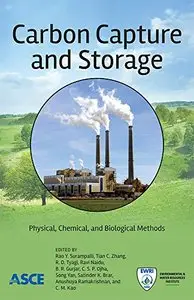Carbon Capture and Storage: Physical, Chemical, and Biological Methods by Edited by Rao Y. Surampalli and Tian C. Zhang
English | 2015 | ISBN: 0784413673 | 550 pages | PDF | 12,7 MB
English | 2015 | ISBN: 0784413673 | 550 pages | PDF | 12,7 MB
Carbon Capture and Storage: Physical, Chemical, and Biological Methods presents comprehensive information on the principles of carbon capture and sequestration (CCS). Among the various climate change mitigation strategies currently being explored, CCS technology allows for the continuous use of fossil fuels and provides time to make a changeover to other energy sources in a systematic way. Many factors decide CCS applicability worldwide, such as technical development, overall potential, flow and shift of the technology to developing countries and their capability to apply the technology, regulatory aspects, environmental concerns, public perception, and costs. This book provides in-depth information on the principles of CCS technology, different environmental applications, recent advances, critical analysis of new CCS methods and processes, and directions toward future research and development of CCS technology. Topics include:<bulleted list>carbon dioxide sequestration and leakage; monitoring, verification, and accounting of carbon dioxide in different settings; carbon reuses for a sustainable future; applications of CCS for the coal-powered electricity industry; carbon dioxide scrubbing processes and applications; carbon sequestration via mineral carbonation; carbon burial and enhanced soil carbon trapping; algae-based carbon capture; carbon immobilization enhanced by photosynthesis; enzymatic sequestration and biochar technology for CCS; carbon sequestration in the ocean; and modeling of carbon dioxide storage in deep geological formations. Engineers, scientists, students, government officers, process managers, and practicing professionals will find this book an essential reference on carbon capture and sequestration technology.
Note: My nickname - interes



